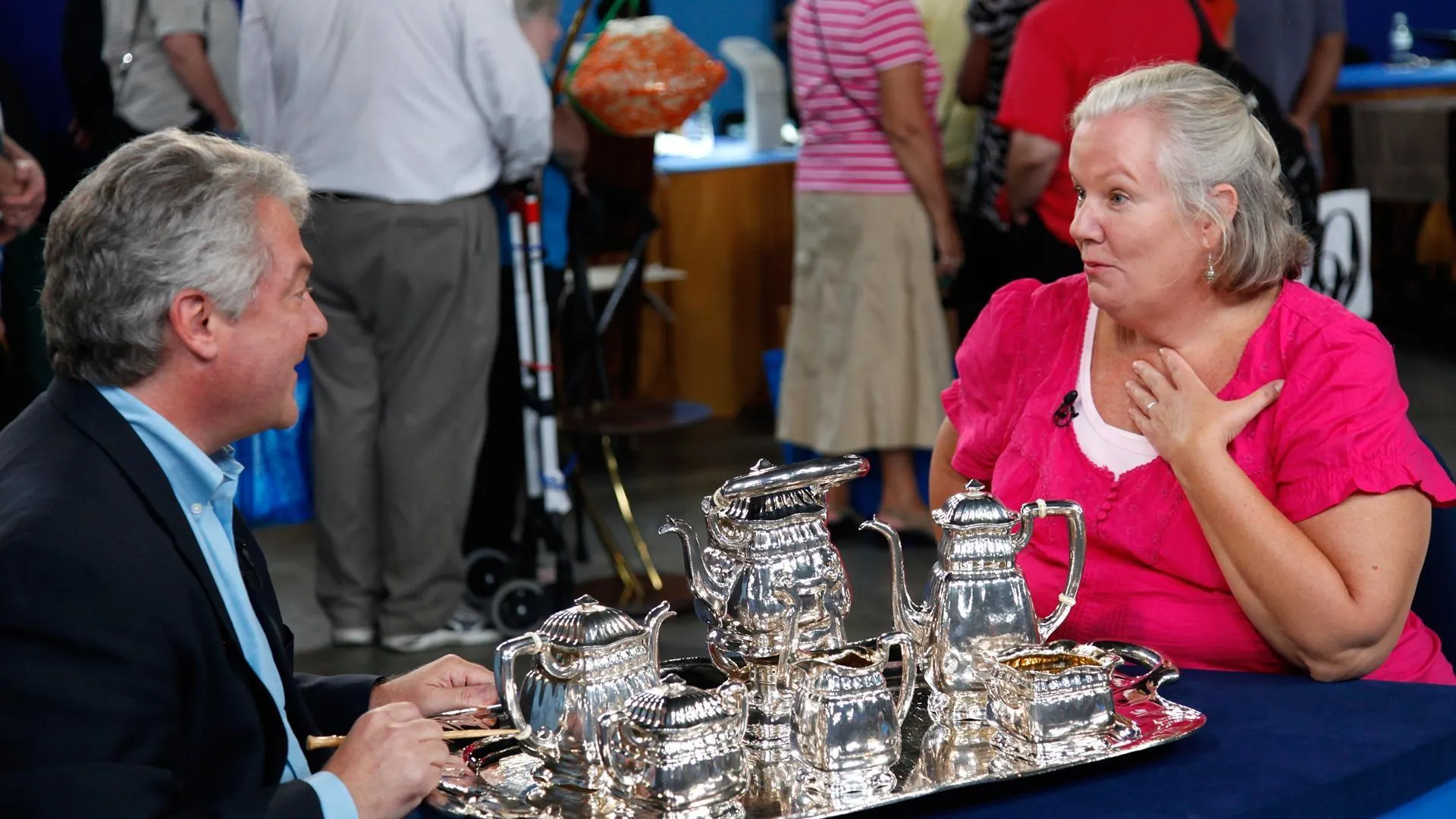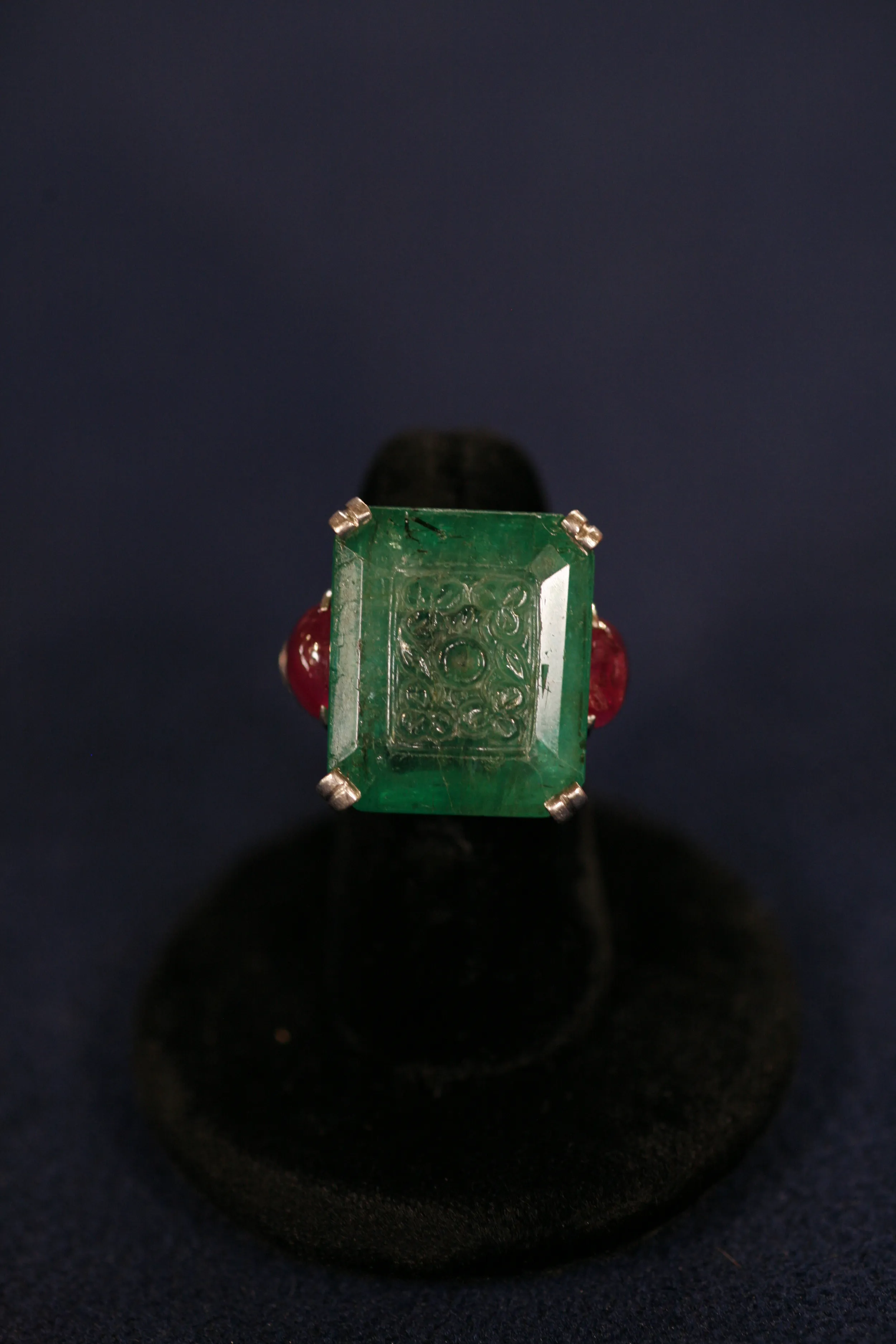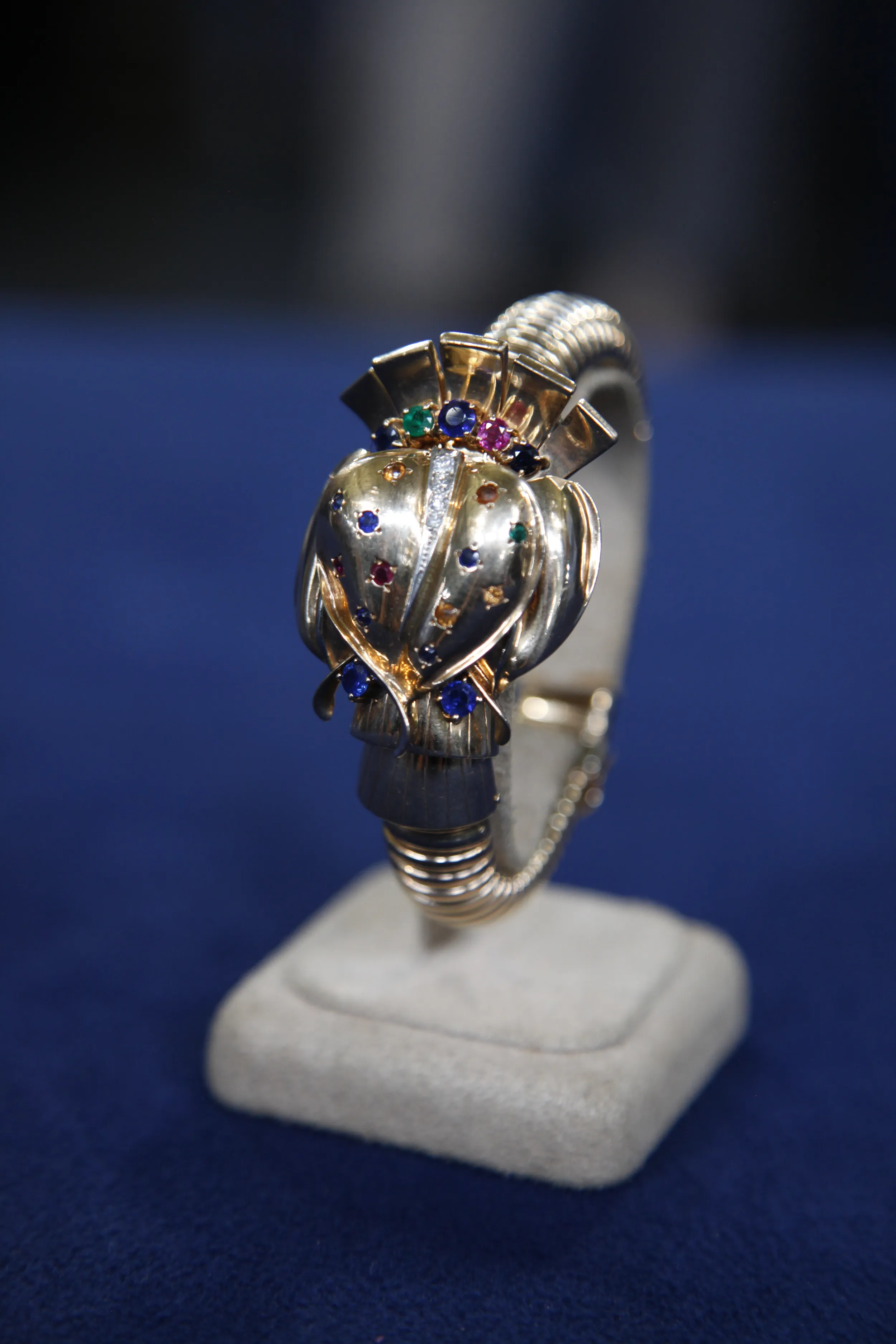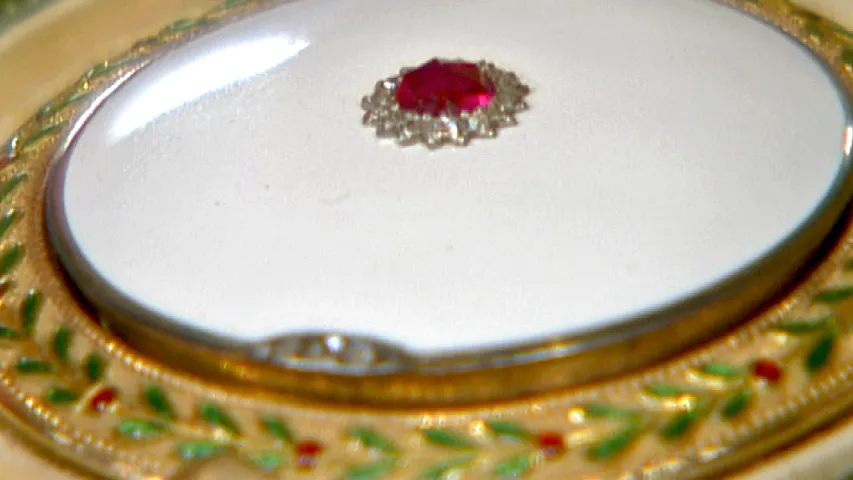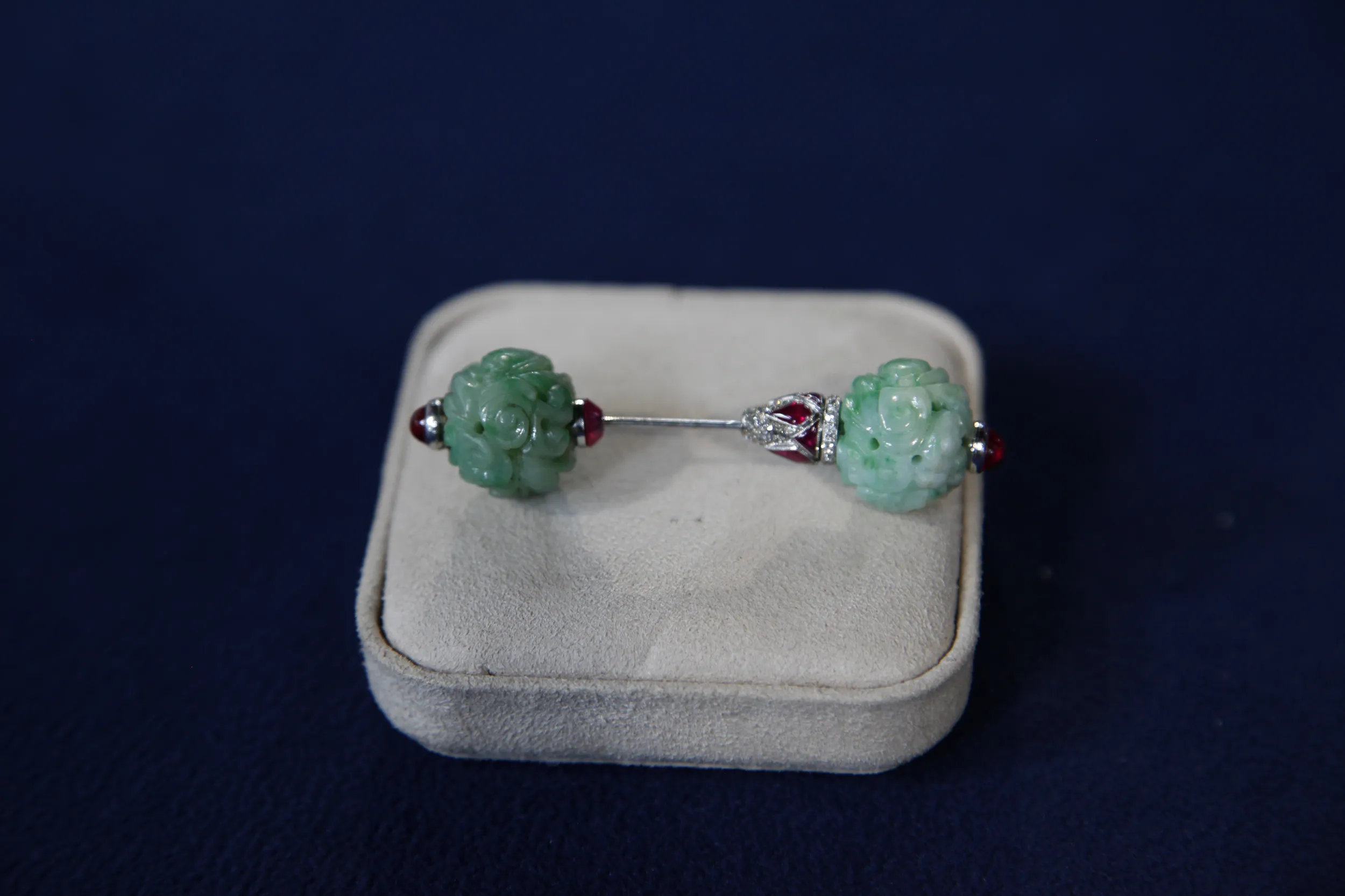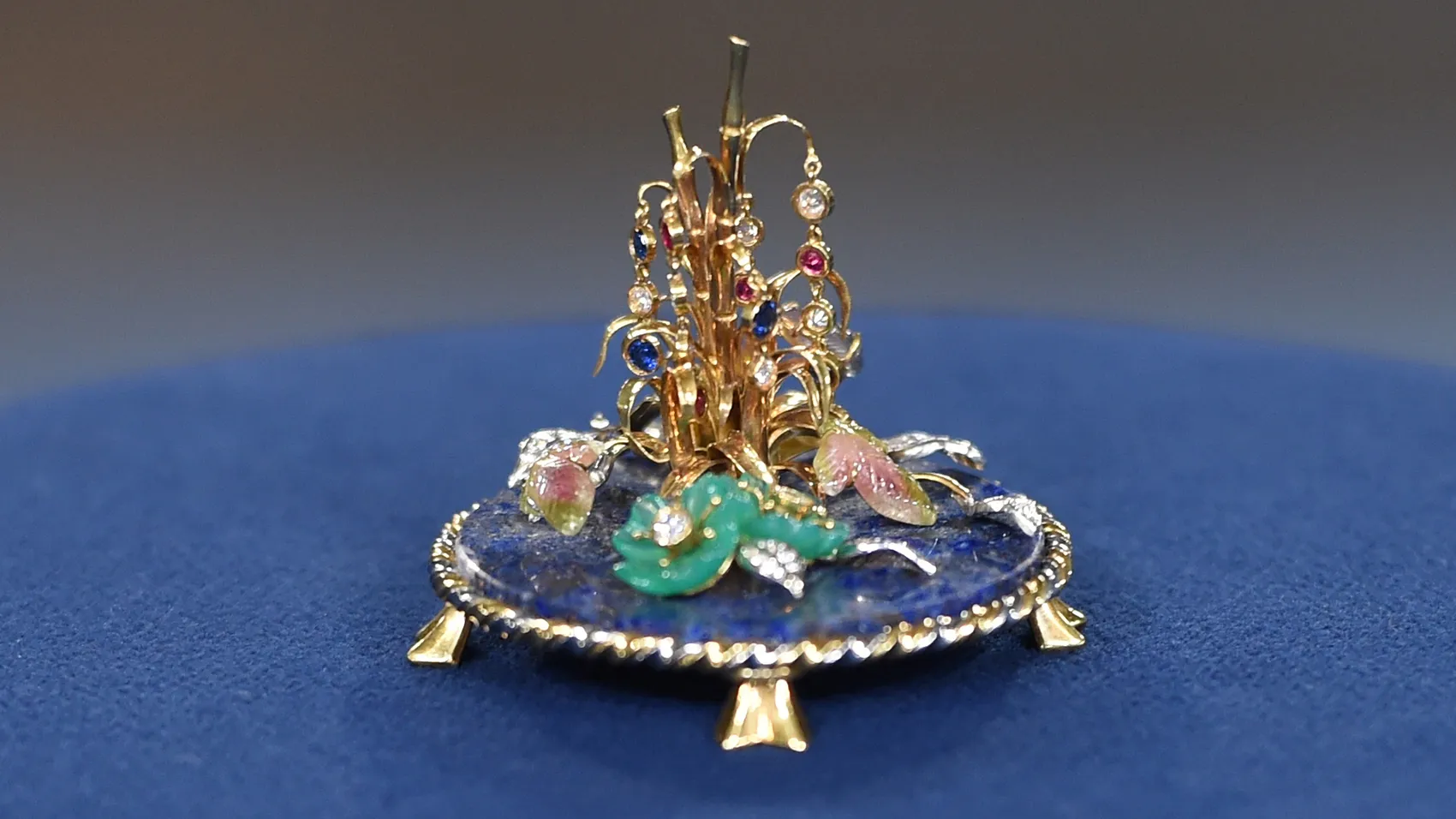GUEST: It came from my grandmother's jewelry box, and I knew nothing about it. I inherited it in 1988...
APPRAISER: Mm-hmm.
GUEST: And I've wondered what it is ever since.
APPRAISER: The first thing that I think we need to do is figure out what the function is. And why don't you pick this up and take it apart and show us how it works?
GUEST: Okay. You twist it, and it does come apart.
APPRAISER: So you've got a sharp pin here at this end. So it's actually what's called a jabot. At the early part of the 20th century, which I believe this dates from, women would wear large shawls. And you'd gather the shawls here, because you didn't want them to fall off. And you'd have this pin that would go through the shawl, keep it in place. Now, as to what the materials are, the bright green and pale green carved spheres at either end actually is a stone that's called jadeite. Not jade, but jadeite.
GUEST: Jadeite...
APPRAISER: That's a different kind of composition from jade. And the type of carving that's in the stone is of clouds and some foliate devices. The carving and the size of these indicates that this was from China. And these were taken from a necklace that would have been about 17, 18 inches long. And that type of necklace is what is called a court necklace, and it was worn to indicate status within the civil service or the military service in the Chinese government.
GUEST: Wow.
APPRAISER: Now, the rest of the material here, the stones-- those are actually rubies.
GUEST: Wow.
APPRAISER: And they're beautiful rubies. And then these little sparkling bits, that's not glass, those are old mine diamonds.
GUEST: Wow.
APPRAISER: And holding all this together is platinum.
GUEST: You're kidding.
APPRAISER: No. And as we looked at this-- and I did this with my colleague Kevin Zavian over in jewelry-- we were looking for a signature. It's not stamped.
GUEST: Okay.
APPRAISER: Which happens sometimes. However, based on the design, the style and so on, I think it has to be French, made certainly by an amazing craftsman. What I love about this is the intermixture of using Asian materials by Western craftsmen, which was so popular the early part of the 20th century. Is this something that you want to keep in your family?
GUEST: Yes.
APPRAISER: Okay, so I'm going to give you an insurance value for this. If you went to buy this today, this would be at least $10,000.
GUEST: Ten thousand dollars?!
APPRAISER: Ten thousand dollars.
GUEST: Wow. I'm shocked. (laughing) I am shocked. That's great-- fantastic.

